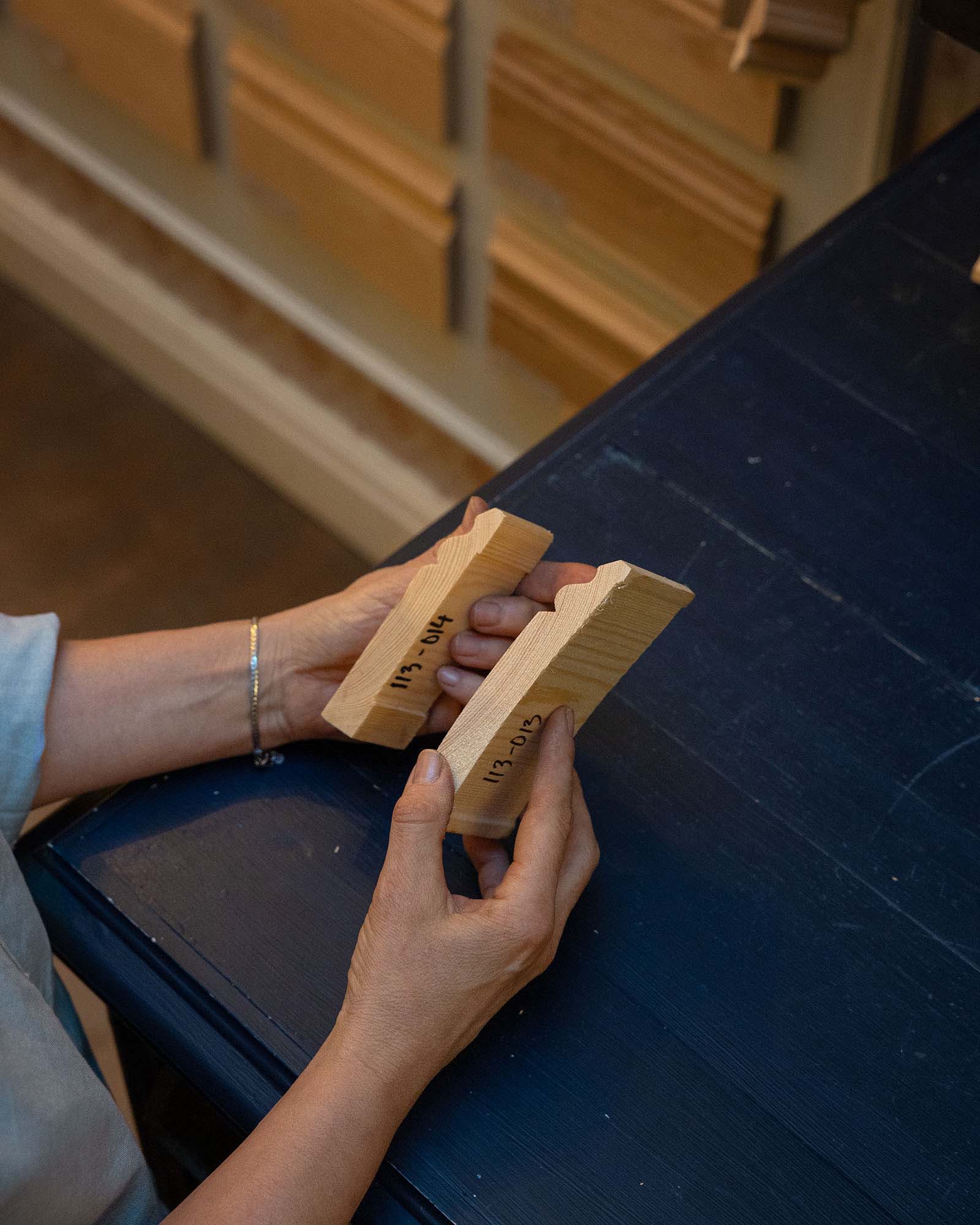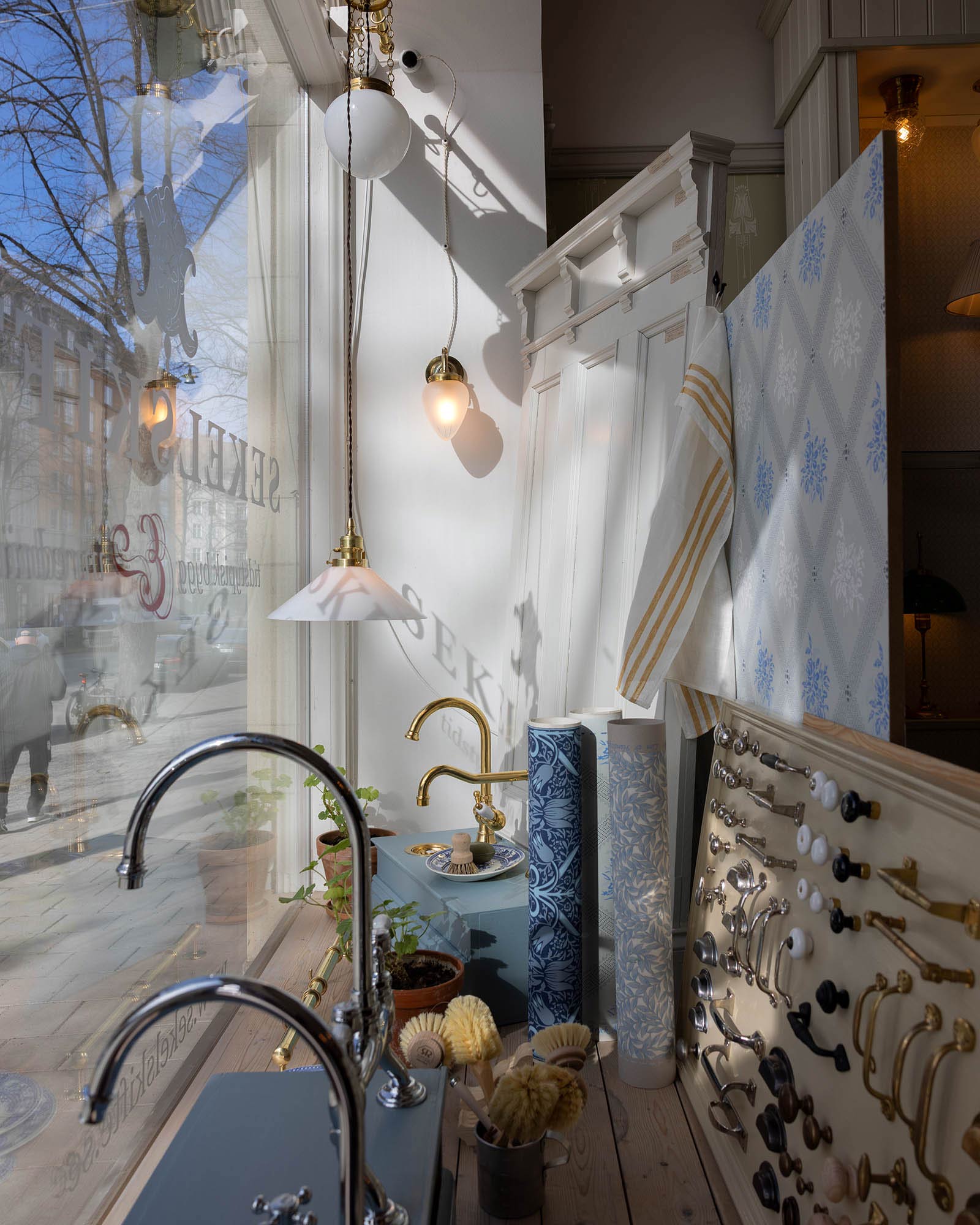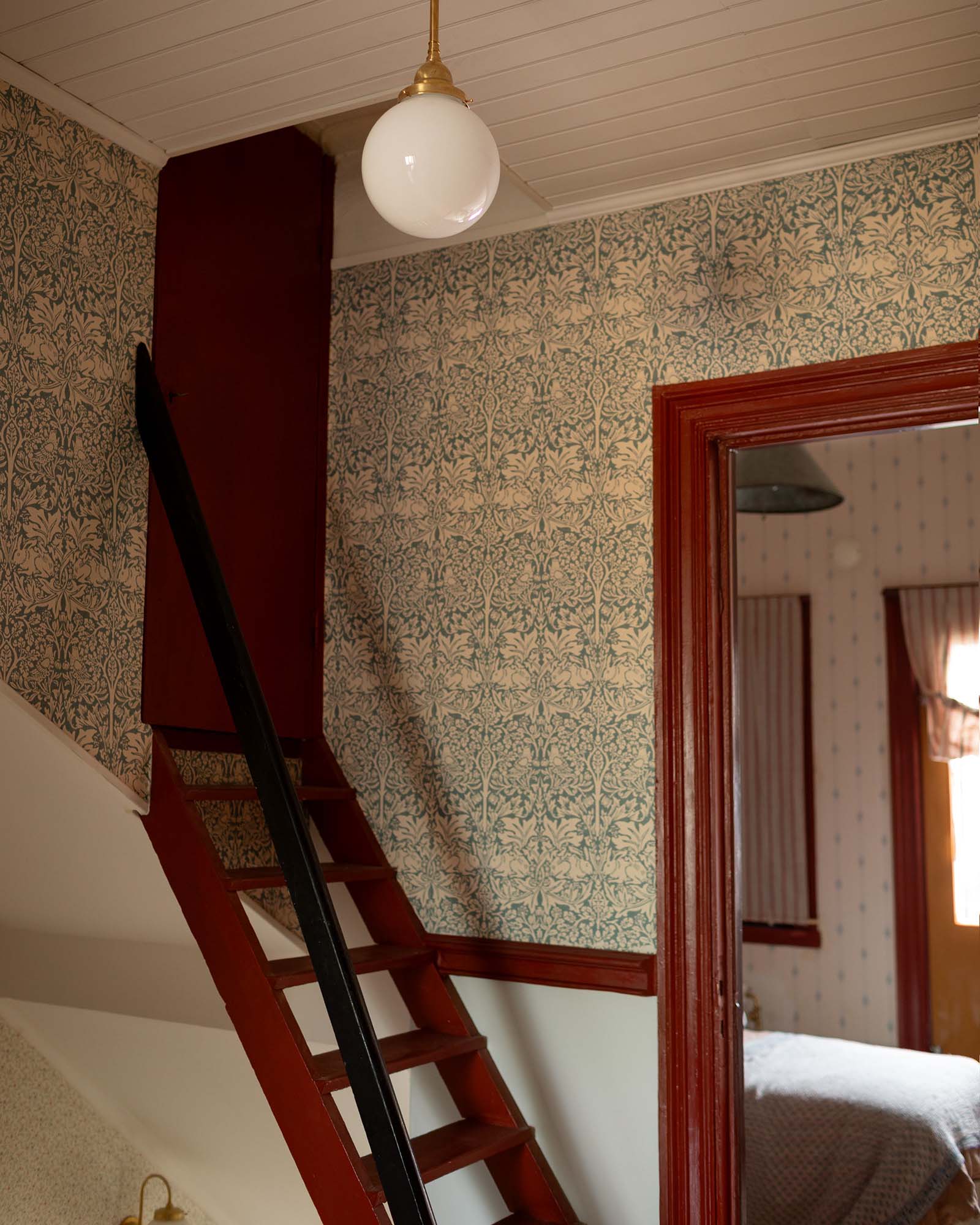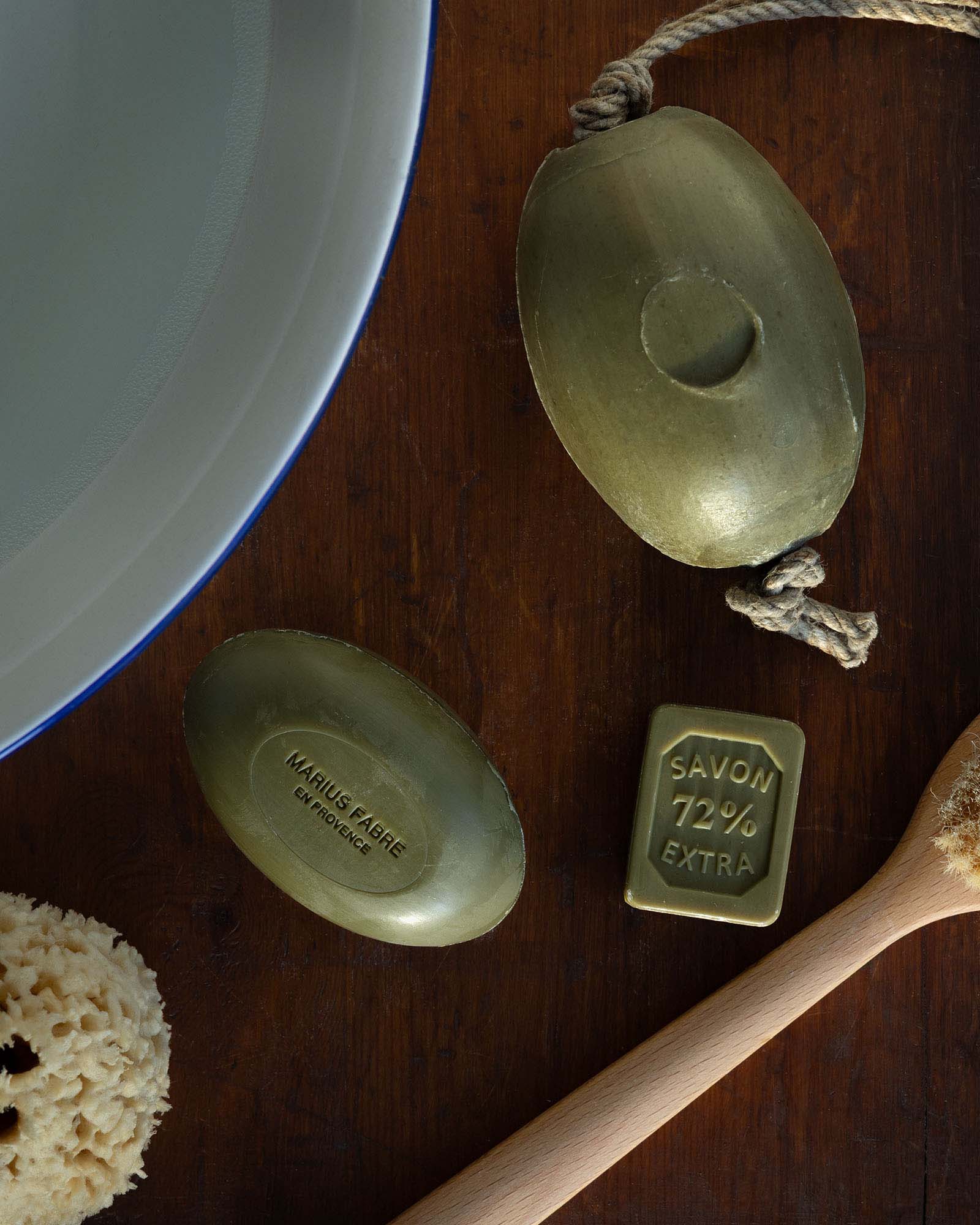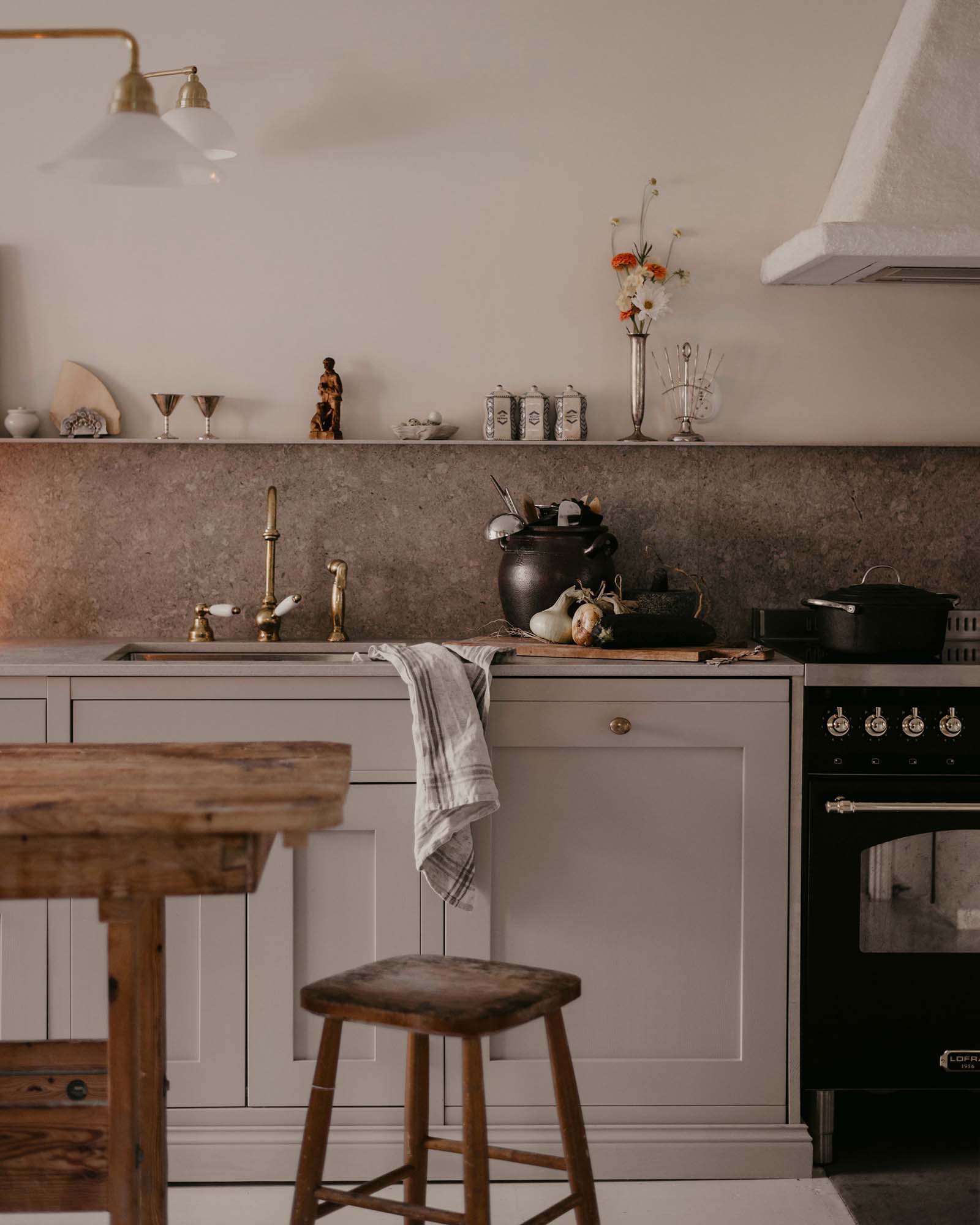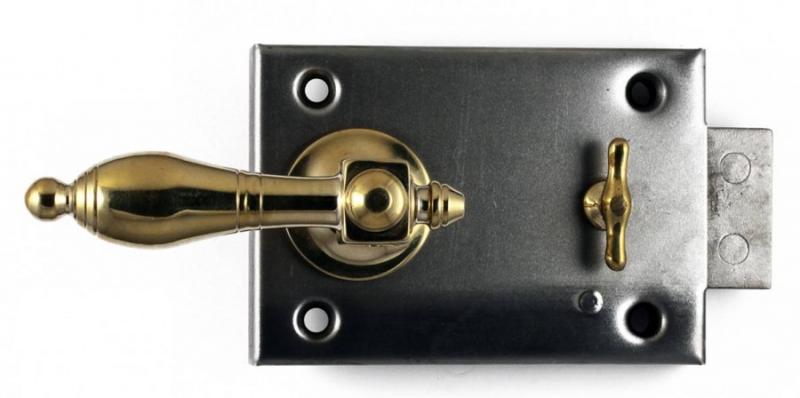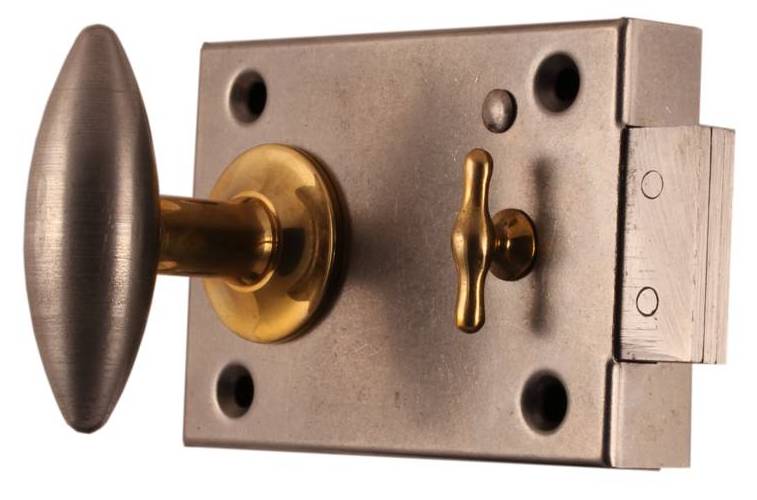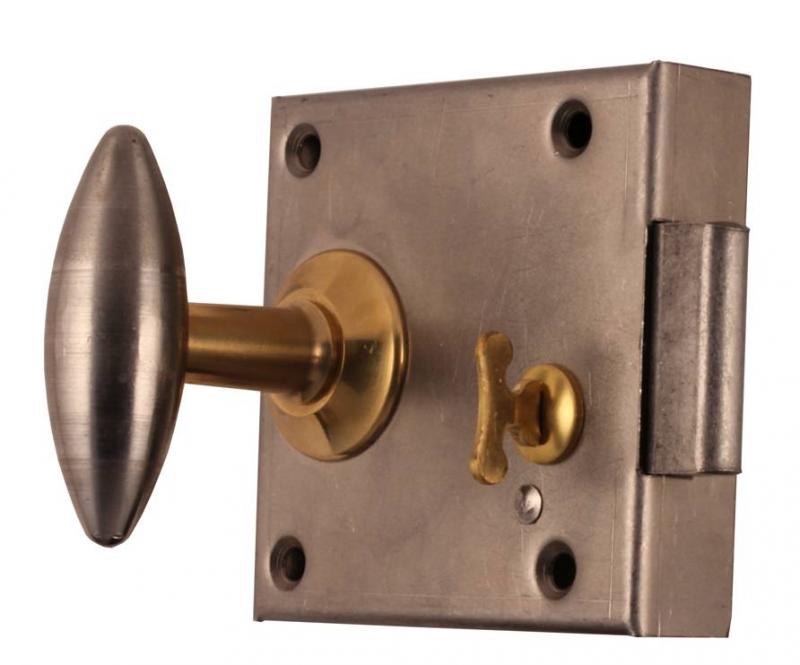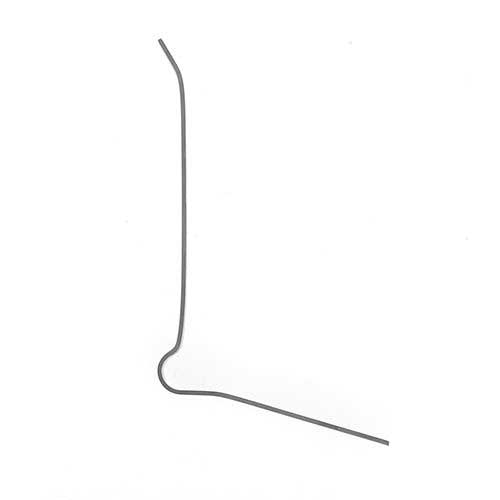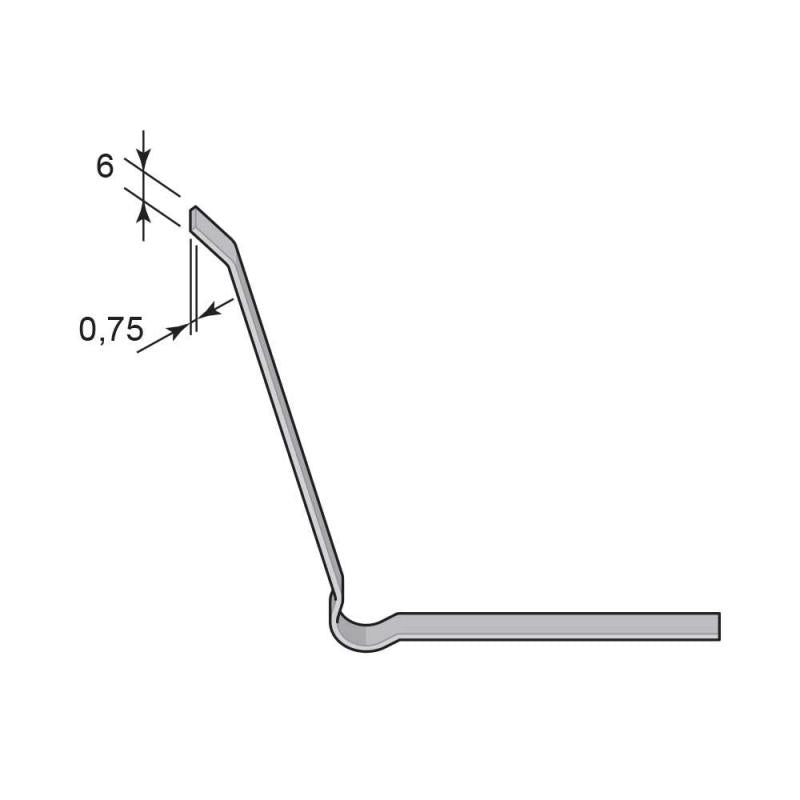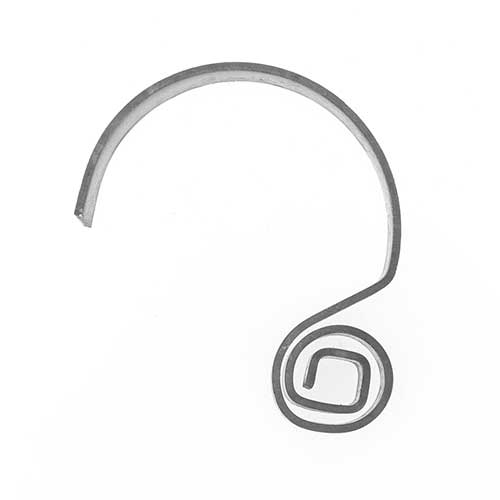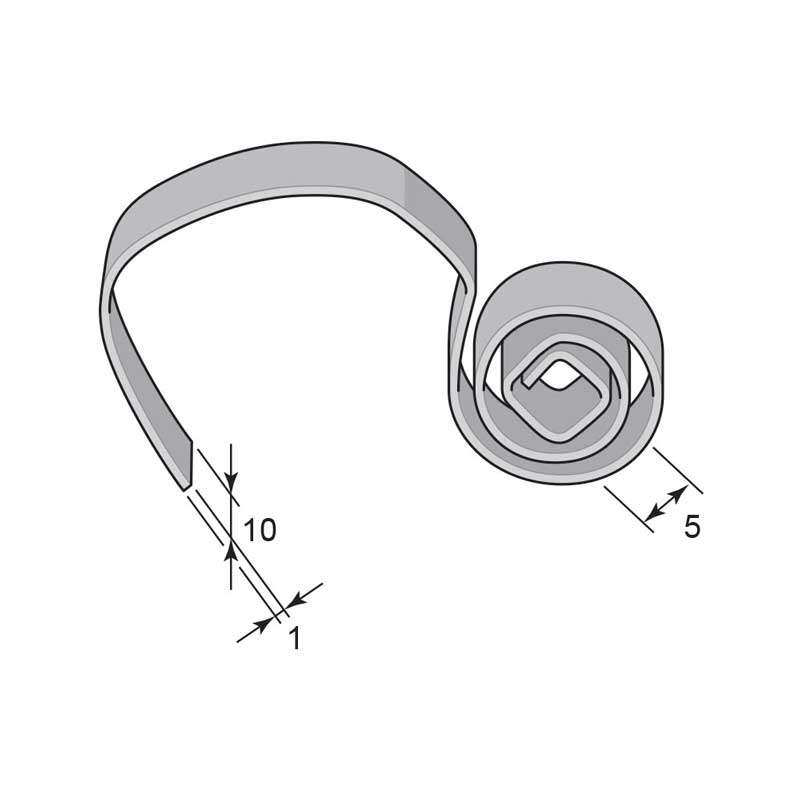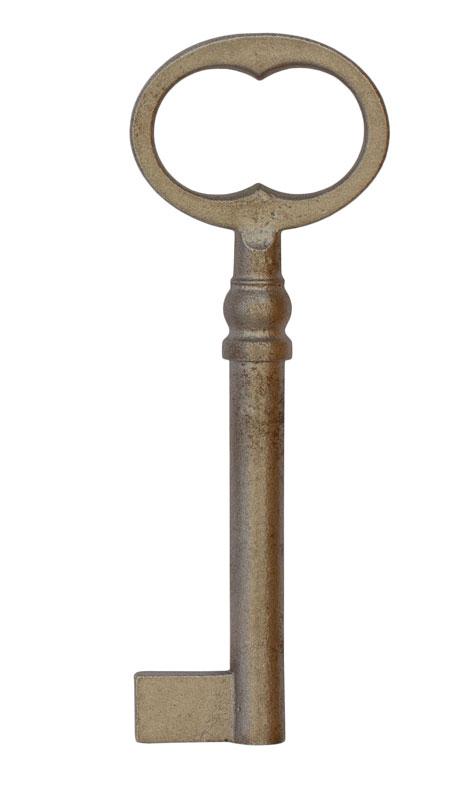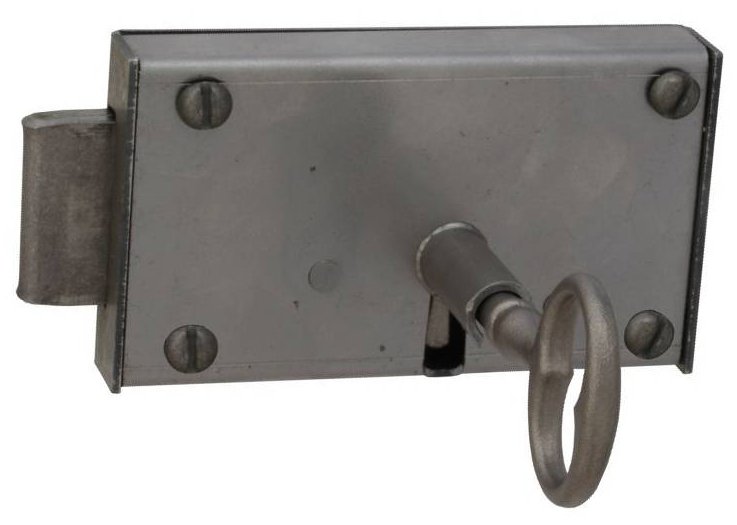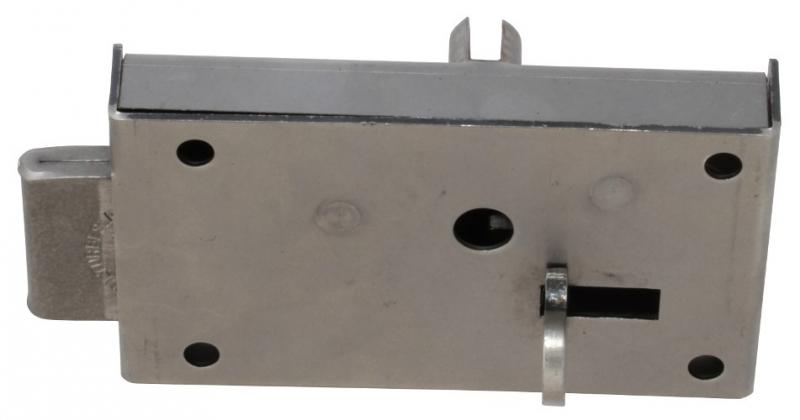
At all times, we have wanted to lock our doors to protect ourselves and our possessions. The oldest construction of locks that one knows of was placing a hasp or latch to block the door, but eventually the locks became more technically refined to more and more resemble the ones we use today. Here we will go through some different types of locks, typical from the Iron Age up to the turn of the century around the 1900s.
One of the earliest modern locks was invented in the 15th century and had a pretty simple construction. The lock was kept in a locked position with a spring and could only be opened when it was pushed up by a key. Initially this type of lock was used in coffins, but after the 16th century it also became common on doors. Thanks to the beveled piston, the door could then be slammed shut and the lock automatically went into a locked position. Cabinet locks often have this construction without handles and are intended to be used only from one side of the door. The housing of the lock is usually mounted on the inside of the door and the key serves as a handle.
In the 17th century, locks became sealed with an outer casing and constructions with helical springs started to occur. Locks without casing were still used but were given a lower status and placed at store houses, etc. The built-in locks were often called square locks, but the construction was pretty much the same (usually a lock with spiral springs).
As a development on the square lock, the chamber lock was invented, with a square housing in steel which also is the type of lock we have in our range. They are attached to the inside of the door and were initially quite large, but they were refined over time and began to be manufactured by the end of the 19th century. The chamber lock was common into the 20th century and could be equipped with a handle, often with through keyholes and later also with a night latch - a mechanism that made it possible to lock the door from the inside for the night. This type can often be encountered in the apartment houses in Stockholm built between 1850-1960. Different variants for right- or left-hinged doors are available, but you can find a chamber lock being placed upside down if after a certain time it was needed on another door.
Source: "Ur låsets utvecklingshistoria," Professor Sigurd Erixon




























































































